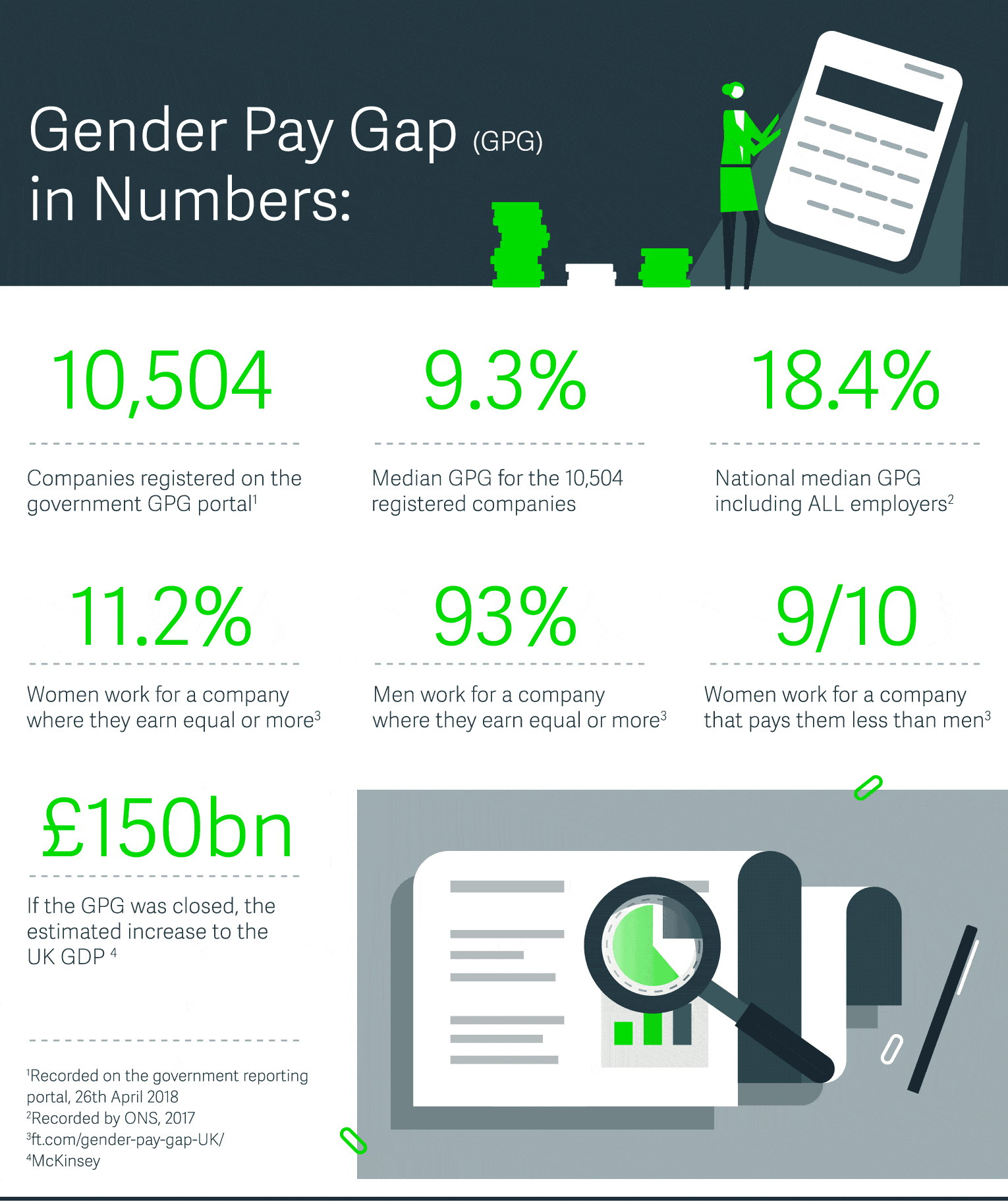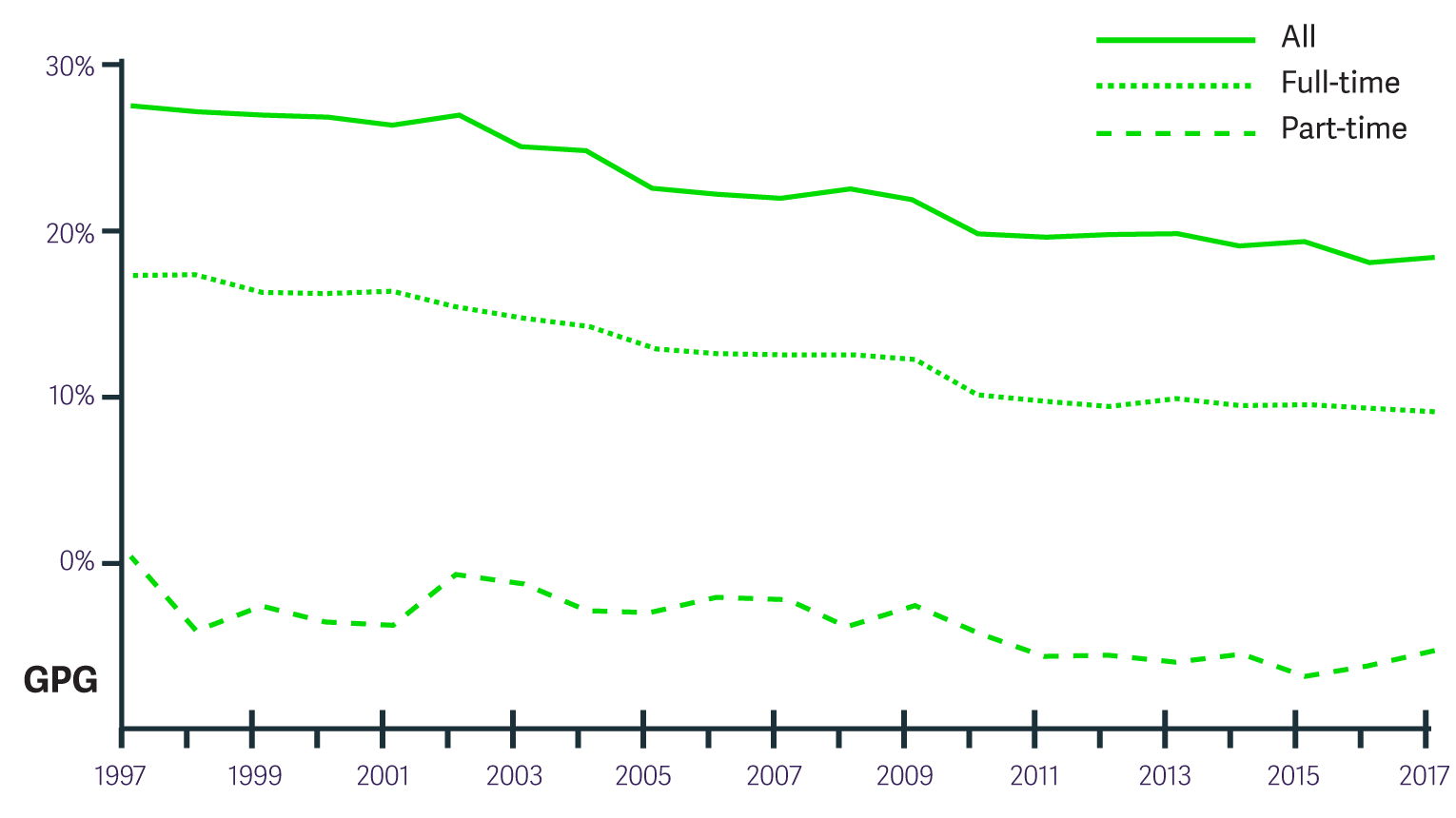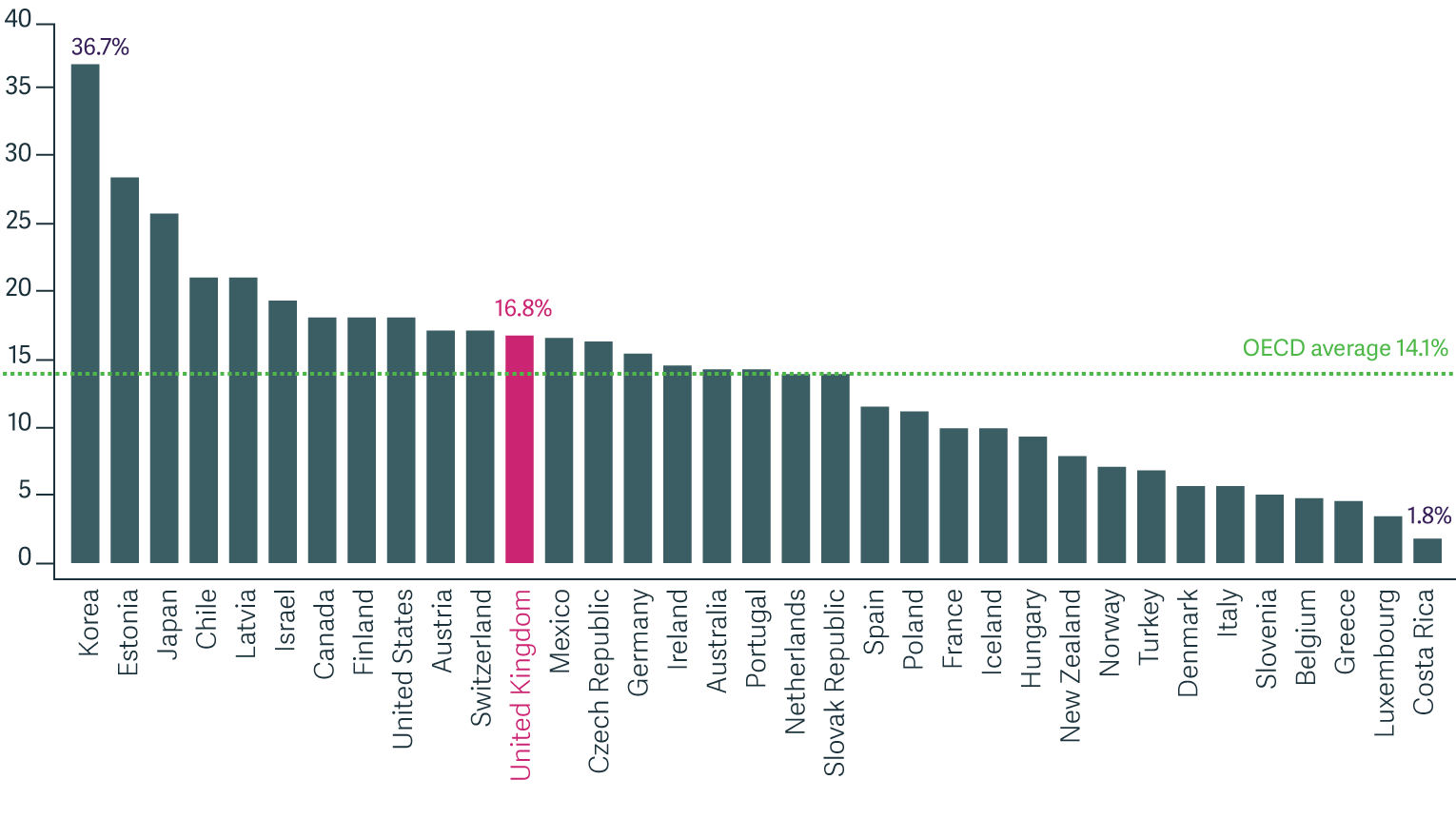Money Matters
Gender pay gap reporting: What your business needs to know

For the past 12 months, in the run-up to new legislation, the gender pay gap has been at the forefront of discussions in business and of how organisations must work to close the gap as they scramble to report their figures.
Since April 2018, all employers with 250 employees or more are required to publish their gender pay gap data every year.
But, what actually is the gender pay gap, what can we do to address any imbalance and what does it mean for small and medium-sized enterprises (SMEs)?

What is the gender pay gap?
The gender pay gap refers to the average amount of money men and women earn in the workplace on an hourly basis.
The difference in the gender pay gap reflects how many men hold higher-paid positions in comparison to women.
What is the difference between gender pay gap and equal pay?
The gender pay gap is not to be confused with equal pay, which refers to the legal requirement that men and women must be paid the same amount for similar work.
Originally the Equal Pay Act 1970 this has since been replaced by the Equality Act 2010.
Why is there a gender pay gap?
The difference in the amount of money that men and women earn cannot be attributed to one distinct factor. However, the predominant reasons for a disparity are generally considered to be:

- The male domination of higher-paid sectors such as science, technology, engineering and maths (STEM) together with law and finance.
- A male dominance in more senior roles.
- More women working part time and taking time out for maternity leave and care responsibilities.
- Stereotypes within the workplace, cultures that lead to a conscious or unconscious bias against women.
Why do employers have to publish their data?
The reason that a company has to report their data is to help identify any gaps between men and women in the workforce with a view to understanding why they exist and identifying any issues that are causing the gap.
The legislation is not predominantly about discrimination but is about taking positive action.
For example:
If women are working in more part-time roles, then flexible working hours or remote-working opportunities would help to support the external commitments that women may have.
Or, offering more support to women in lower-level positions with training opportunities and encouragement for managerial and mentorship for director roles could address an imbalance.
“Gender pay gap reporting is an incredibly important step forward, because if companies are transparent about gender pay and the root causes behind any gap, they can find the solutions they need to build businesses that work for their employees and reflect the communities they serve.” – Helen Rose, chief operating officer, TSB
What should employers publish and when?
All companies with 250 or more employees (on the snapshot date) must complete and submit their gender pay gap data.
This includes employers in:
- Private sector and listed companies
- Voluntary sector
- The public sector
The snapshot dates are:
- 31 March for public sector employers
- 4 April for private and voluntary sector employers
The data that must be gathered for reporting is outlined here…
Required gender pay gap data is reported here…
If you are legally bound to report your gender pay gap data and don’t, then you are liable to enforcement action from the Equality and Human Rights Commission.

Is the gender pay gap getting bigger or smaller?
Historically, the Office for National Statistics (ONS) has also recorded gender pay gap information by gathering data from the Annual Survey of Hours and Earnings (ASHE), which is a survey of individual employee pay. It differs from the government portal figures as it includes all employers and not just those with 250 or more employees.
The figures from the ONS report a national gender pay gap of 18.4% (2017).
Figures recorded by ASHE show that since 1997, the gender pay gap is getting smaller. In 1997, the pay gap for all employees was 27.5% and that has reduced to 18.4% for latest figures recorded in 2017.

Data source: https://www.ons.gov.uk/employmentandlabourmarket/peopleinwork/earningsandworkinghours/bulletins/annualsurveyofhoursandearnings/2017provisionaland2016revisedresults
How does the UK gender pay gap compare globally?

Data source 1: https://data.oecd.org/earnwage/gender-wage-gap.htm Data source 2: https://stats.oecd.org/index.aspx?queryid=54751
“Change won’t come from beating up business leaders … It has to be about finding ways to all come together to improve gender imbalance in the workplace.” – Brenda Trenowden, chair of the 30% Club
How do I calculate my gender pay gap?
A company with more than 250 employees is legally obligated to report their full gender pay gap data, including:
- mean gender pay gap in hourly pay
- median gender pay gap in hourly pay
- mean bonus gender pay gap
- median bonus gender pay gap
- proportion of males and females receiving a bonus payment
- proportion of males and females in each pay quartile
A full explanation of which employees are included/excluded in the reporting can be found here.
A detailed guide which explains how to calculate each of the figures above can be found here.
If you are a small employer (fewer than 250 employees) and are not duty bound to report, then you can still submit an official report or you can measure your pay gap to benefit from identifying any gaps in your organisation.
To do so, simply calculate and compare the median hourly rate for men and women as follows.
What is the difference between a mean and a median?
A mean is calculated as the sum of individual units of data, divided by the number of individual units.
For example, at Werks & Co. there are five employees, earning: £20k, £20k, £25k, £30k and £120k.

For Werks & Co, the mean of pay is £43k.
The vulnerability of mean averages are that they are easily skewed by outlier data points. In the example above, the managing director who earns £120k is taking the workers’ average pay way above what the other four typical employees earn.
Another way to consider this is, imagine a warehouse full of packing staff who earn between £20-25k each. You would expect an average of around £22-23k.
If the owner and founder of the company who has a multimillion-pound salary walks into the room and joins the equation, the average goes through the roof and all the salaries of 1,000 warehouse employees and one wealthy founder creates a mean average salary in the millions.
A median is calculated as identifying the unit number that is the midpoint in a series of data.
For example, at Werks & Co we calculate the median by arranging the data units in numerical order and then finding the middle number.

As the number that lies in the middle of the unit sequence of five numbers is the third number:
For Werks & Co. the median pay is £25k.
Immediately, we can see this is a much more realistic and true representation of the average salary of all employees at Werks and is not skewed by the large salary of the MD (£120k). Half of the employees earn less than the median and half earn more.
Calculate the hourly rate of each employee
Gather the number of hours each employee works on a weekly basis and their hourly rate:
- Divide seven by the number of days in the pay period. A monthly pay period is classed as 30.44 days and a yearly pay period is 365.25 days.
- Add together the basic pay and bonus of each employee.
- Multiply by the figure defined in step one (the multiplier).
- Divide by the weekly hours of the employee.
For example:
Jane has a basic annual salary of £30k. Her annual bonus is £3k. Her weekly working hours are 37.5.

Calculate the median hourly rate gender pay gap
- Segment the hourly rate of pay for male and female employees.
- List the hourly rate of pay from highest to lowest for each segment.
- Identify the number that is middle of the range (as above).
- Subtract the median hourly rate for women from the median hourly rate for men.
- Divide this number by the median hourly rate for men.
- Multiply by 100.
For example:
Median hourly rate for men = £22.80. Median hourly rate for women = £16.72.

The gender pay gap of 26.67% is the percentage difference of the median hourly rate for women from the median hourly rate of men.
This figure alone can offer an insight into how gender neutral your company is. If there is a distinct imbalance you may want to dig deeper by completing all the calculations and comparing different pay bands to try and find where the differences lie.
A detailed guide that explains how to calculate all of the gender pay gap reporting figures can be found here.
I have identified a gender pay gap, now what can I do?
Ask yourself the following questions:
- What is the gender balance of senior and junior roles?
- Could we employ more women in senior roles?
- Can we employ more men in junior or part-time roles?
- Could we offer other benefits such as flexible working?
- How can we appeal to new employees in a gender-neutral way?
- Is our bonus structure gender neutral?
- Should we voluntarily disclose our gender pay gap?

As a small or medium-sized business, what can I do?
Although the focus and scrutiny of the new gender pay gap reporting is on large and high-profile employers this shouldn’t be a signal for SMEs to dismiss the legislation as being not relevant to them.
A business of any size should be considering their gender pay gap and addressing what could be done in their organisation to ensure equality.
By choosing to have clarity and to report your gender pay gap regardless of your size, this can send a positive and clear signal that you are a progressive company who wants to ensure the best working environment.
Positive steps that an SME can take to ensure an environment where anyone can progress regardless of gender include:
Unconscious bias
Being aware of any subconscious bias towards gender is the first step to shining a light on discrimination and inequality in the workplace.
Tackle outdated stereotypes about women head on and instead cultivate an environment where women and men are seen as equal and that no glass ceilings exist.
Managers and decision makers should receive training to ensure they don’t hold any unconscious bias during either interviews, promotion selection or salary review.
Also, consider how seemingly innocent comments or jokes could contribute to an overall culture of stereotyping. It’s often what we consider the ‘harmless’ things that are normalised and which create the biggest problems.
Flexible working
A contributory factor to women taking part-time roles is often that they have commitments outside of the workplace, which means they cannot attend a fixed place of work during a traditional nine-to-five, Monday to Friday scenario.
By offering flexibility as to when and where work is completed, this can help to be inclusive to women who are managing a family and/or elderly parents.

Childcare
If a company is in a position to offer childcare for employees, this can have a significant impact on helping those with parental responsibilities and can create a more equal opportunity environment for those that have children, against those that don’t.
If you have a business that is location dependent, then considering how you can alleviate childcare responsibilities can open up more opportunity for parents to progress.

In the UK, there are two million people not working because they are looking after children or a home and 89% of these are women. (Government Equalities Office)
Leadership training
Ensure women are encouraged into management and senior roles and any subconscious gender opinions are set aside when considering employees for advancement within the company.
By offering leadership training and mentorship, this can help to support women (and men) who may have ability but who lack the confidence to put themselves forwards to progress.
Encourage women to apply for non-traditional roles
For businesses in historically male dominated sectors, such as STEM, construction, law and finance, a company can actively run female-oriented advertising and encourage applications from women.
Also, there is the opportunity to take positive steps to dispel future stereotyping of roles. This can include holding seminars and talks in education or job fairs to encourage the coming generations to see roles as gender neutral and empower girls and women with the knowledge that their applications into all sectors will be welcomed.
A car dealership could offer to deliver a talk at a school to encourage girls to consider a career as a mechanic, for example, or a construction firm could offer work placements to girls and encourage them to pursue a career in engineering.
“Executives must understand that their companies can’t be successful on a global platform if they don’t have a diverse and inclusive workforce. Being diverse means you have the benefit of an increased talent pool to recruit from. If you have a narrow recruitment focus, you may miss out on some of the best talent available.” – Sheila Flavell, Chief Operating Officer, FDM
What are the benefits of promoting gender equality?
By being a progressive gender pay gap neutral company, you can become a more attractive business to new employees and attract top talent.
A business is built on a foundation of its employees and people that are valued will be more productive, more creative and will be a better representation to both clients and customers.
Gender pay gap equality is not just good for the women in employment, it’s also good for business.
According to the Government Equalities Office, the benefits of gender diversity filter across all areas of business:

- Reputation – improving your brand reputation
- Recruitment – as a fair employer you attract more talent
- Retention – employees feel both valued and fairly treated, and your retention rate is increased
- Resources – staff productivity is increased
- Representative – the diverse needs of customers and suppliers are met

“We all know that diverse businesses are more commercially successful. But we also know that the best ideas come from diverse groups – and given that our vision is to keep inventing the future for small & medium businesses, it is not just preferable, but essential that we welcome people of all identities and backgrounds.” – Stephen Kelly, chief executive, Sage
Other references
- https://gender-pay-gap.service.gov.uk/
- https://www.equalityhumanrights.com/en/advice-and-guidance/gender-pay-gap-reporting
- https://assets.publishing.service.gov.uk/government/uploads/system/uploads/attachment_data/file/664017/Gender_pay_gap_-_actions_for_employers.pdf
- https://ig.ft.com/gender-pay-gap-UK/
The guide to people and payroll
Want to motivate your employees, manage the run-up to payday and improve your payroll processes? Get you free guide and use it to get your people and payroll processes working effectively.







Ask the author a question or share your advice